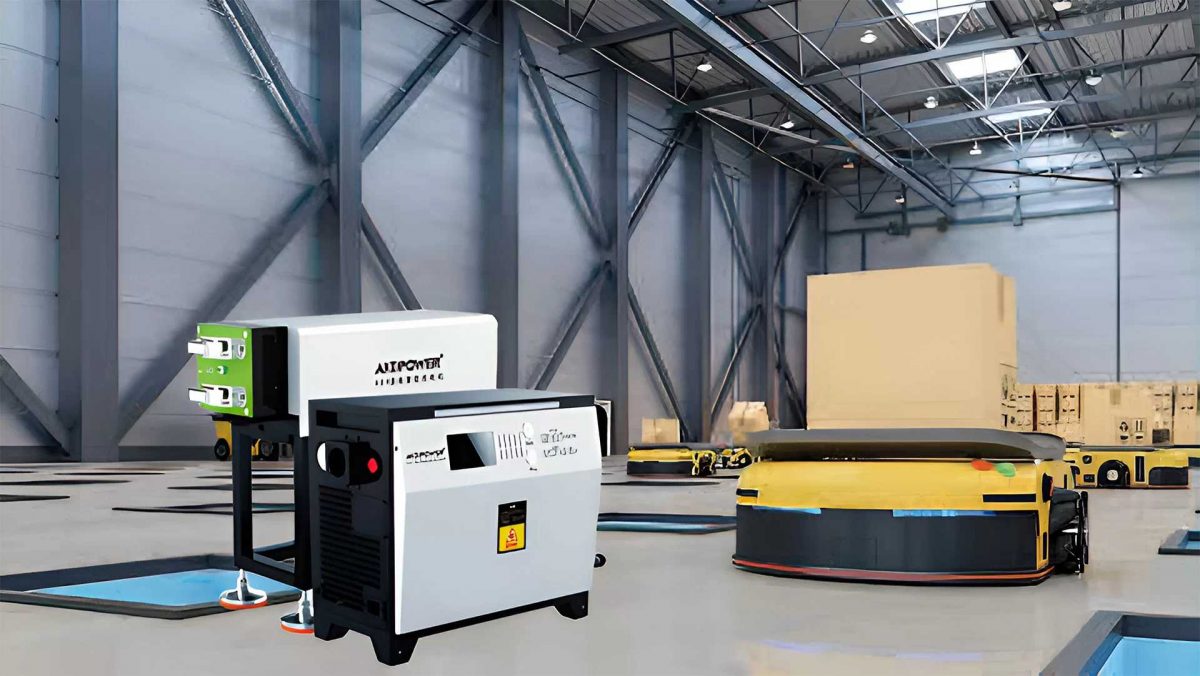Automated Guided Vehicles (AGVs) are the workhorses of modern warehouses and factories — but their productivity is only as good as the batteries that power them. Optimizing the charging process isn’t just about getting a battery from 20% to 100% faster; it’s about minimizing operational interruptions, preserving cycle life, and making the whole fleet more predictable and resilient. This article lays out practical, engineering-minded strategies you can apply today, based on proven charging science and current industry practice.
Pick the right battery chemistry for the job
The single biggest decision that determines charging behavior and lifetime is battery chemistry. Traditional lead–acid batteries remain common in low-cost fleets, but they suffer from lower energy density, shorter useful life, and continuous maintenance needs. Lithium iron phosphate (LiFePO₄) chemistry has become the default choice for modern AGVs because it delivers higher cycle life, better thermal tolerance, and faster recharge capability — all of which translate directly into less downtime and lower total cost of ownership. Many vendors now offer LiFePO₄ packs specifically tuned for AGV duty.
Use the correct charging profile — and make it adjustable
For LiFePO₄ and other lithium chemistries, a multi-stage charging profile is the standard: a constant-current (CC) phase to quickly raise state-of-charge, a constant-voltage (CV) taper to finish the charge safely, and a low-voltage float or maintenance stage if required by the application. Choosing the right set points (voltage limits, current cutoffs and C-rate limits) is critical — overshoot shortens life, while overly conservative settings waste operational time. Deploy chargers that allow configurable profiles so you can tune them to the pack design and real-world duty cycle.
Practical tip: limit peak charging currents to the manufacturer-recommended C-rate (for many LiFePO₄ packs this is often between 0.5C and 1C), and include current tapering to avoid stressing cells during the CV phase.
Embrace opportunity charging — but do it smartly
Rather than one long charge per shift, many operations use “opportunity charging”: short charges during natural pauses (breaks at a work station, shift changes, or brief idle periods). Opportunity charging can keep AGVs in service longer without dedicating vehicles to long charge cycles, but it must be managed to avoid excessive partial-charge cycles that can, if misapplied, reduce battery life. Use an SOC (state of charge) threshold system: schedule short top-ups only when SOC dips below a safe lower bound, and avoid repeatedly charging tiny amounts that produce many shallow cycles.
Make the charging infrastructure fleet-aware
Charging hardware is more than a cable and a plug. Design the station layout for easy parking, fast alignment and reliable connector contact. For large fleets, centralize power distribution but decentralize station control so many AGVs can opportunistically charge without straining the facility’s electrical capacity. Incorporate smart load management and queuing logic at the rack or building level to prioritize critical vehicles and smooth peak power draw.
Connector and charger compatibility is critical — always match chargers to the pack voltage and chemistry and use standardized connectors where possible to reduce failure modes.
Monitor SOC and SOH continuously with a modern BMS
A modern Battery Management System (BMS) is the nerve center of any optimized charging strategy. Besides measuring SOC (how full the battery is), a good BMS reports SOH (state of health), cell imbalances, temperature hotspots, and charge/discharge history. Integrate BMS telemetry into your fleet-management system so charging decisions can be data-driven: route low-SOH vehicles for maintenance, schedule aggressive charging only for packs that show healthy impedance and temperature margins, and pre-warm batteries before charging in cold conditions.
Advanced practice: use cell-level balancing during or after charge cycles to ensure long-term uniformity across the pack — this prevents weak cells from limiting usable capacity as the fleet ages.
Control temperature — it’s a make-or-break factor
Temperature profoundly affects both charging speed and lifetime. High temperatures accelerate degradation; low temperatures reduce available capacity and can make fast charging unsafe. Wherever possible, keep charging stations in a controlled environment and consider active thermal management for the battery packs themselves — forced-air cooling, heat sinks, or integrated liquid loops for high-power fleets. Some packs include heaters to bring cold batteries into an acceptable charging window before applying higher currents. Design temperature cutoffs in your charging logic to prevent charging outside safe ranges.
Integrate charging with AGV fleet control and scheduling
The best gains come when charging is part of the AGV control ecosystem. Let the fleet management system receive SOC and SOH telemetry, predict remaining runtime based on assigned tasks, and route vehicles to charging stations proactively. Predictive scheduling — using usage history and task forecasts — reduces last-minute rush-charges that stress batteries. When chargers and AGV controllers communicate, operators can implement graceful handoffs: an AGV nearing a long task completion can be routed to a fast-charge bay; a lightly loaded vehicle can be held to top-up opportunistically.
Emerging capability: machine-learning models can optimize charger allocation across a fleet, balancing throughput, power constraints, and battery aging costs.
Keep maintenance routine and focused
Even the best charging strategies need routine maintenance: clean connectors, inspect cables, monitor contact resistance, and follow recommended service intervals for the packs and BMS. For lead–acid backups, check electrolyte levels; for lithium systems, watch for any swelling or unusual drift in cell voltages. Maintain a log of charge cycles and anomaly events — this historical data is invaluable for diagnosing underlying problems before failures cascade.
Conclusion: balance runtime, throughput and longevity
Optimizing AGV battery charging is a systems problem: chemistry selection, charger profiles, thermal control, BMS telemetry, infrastructure design and fleet-level scheduling must all work together. By choosing LiFePO₄ where appropriate, applying correct CC/CV charging profiles, leveraging smart opportunity charging, and integrating BMS data with fleet control, operators can meaningfully extend battery life and reduce costly downtime. Vendors such as RICHYE supply battery modules and BMS systems designed for these modern workflows; choose components that allow flexibility and telemetry so you can continuously tune the system as your operation evolves.
Implementing these practices pays dividends in predictable uptime, lower maintenance costs, and a healthier fleet — and in an environment driven by throughput and precision, those gains quickly translate into competitive advantage.




